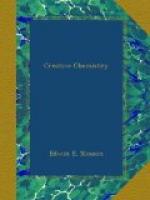As Captain Mahan says, the same objection has been raised at the introduction of each new weapon of war, even though it proved to be no more cruel than the old. The modern rifle ball, swift and small and sterilized by heat, does not make so bad a wound as the ancient sword and spear, but we all remember how gunpowder was regarded by the dandies of Hotspur’s time:
And it was great pity, so it was,
This villainous saltpeter should be digg’d
Out of the bowels of the harmless earth
Which many a good tall fellow had destroy’d
So cowardly; and but for these vile guns
He would himself have been a soldier.
The real reason for the instinctive aversion manifested against any new arm or mode of attack is that it reveals to us the intrinsic horror of war. We naturally revolt against premeditated homicide, but we have become so accustomed to the sword and latterly to the rifle that they do not shock us as they ought when we think of what they are made for. The Constitution of the United States prohibits the infliction of “cruel and unusual punishments.” The two adjectives were apparently used almost synonymously, as though any “unusual” punishment were necessarily “cruel,” and so indeed it strikes us. But our ingenious lawyers were able to persuade the courts that electrocution, though unknown to the Fathers and undeniably “unusual,” was not unconstitutional. Dumdum bullets are rightfully ruled out because they inflict frightful and often incurable wounds, and the aim of humane warfare is to disable the enemy, not permanently to injure him.
[Illustration: From “America’s Munitions” THE CHLORPICRIN PLANT AT THE EDGEWOOD ARSENAL
From these stills, filled with a mixture of bleaching powder, lime, and picric acid, the poisonous gas, chlorpicrin, distills off. This plant produced 31 tons in one day]
[Illustration: Courtesy of the Metal and Thermit Corporation, N.Y.
REPAIRING THE BROKEN STERN POST OF THE U.S.S. NORTHERN PACIFIC, THE BIGGEST MARINE WELD IN THE WORLD
On the right the fractured stern post is shown. On the left it is being mended by means of thermit. Two crucibles each containing 700 pounds of the thermit mixture are seen on the sides of the vessel. From the bottom of these the melted steel flowed down to fill the fracture]




